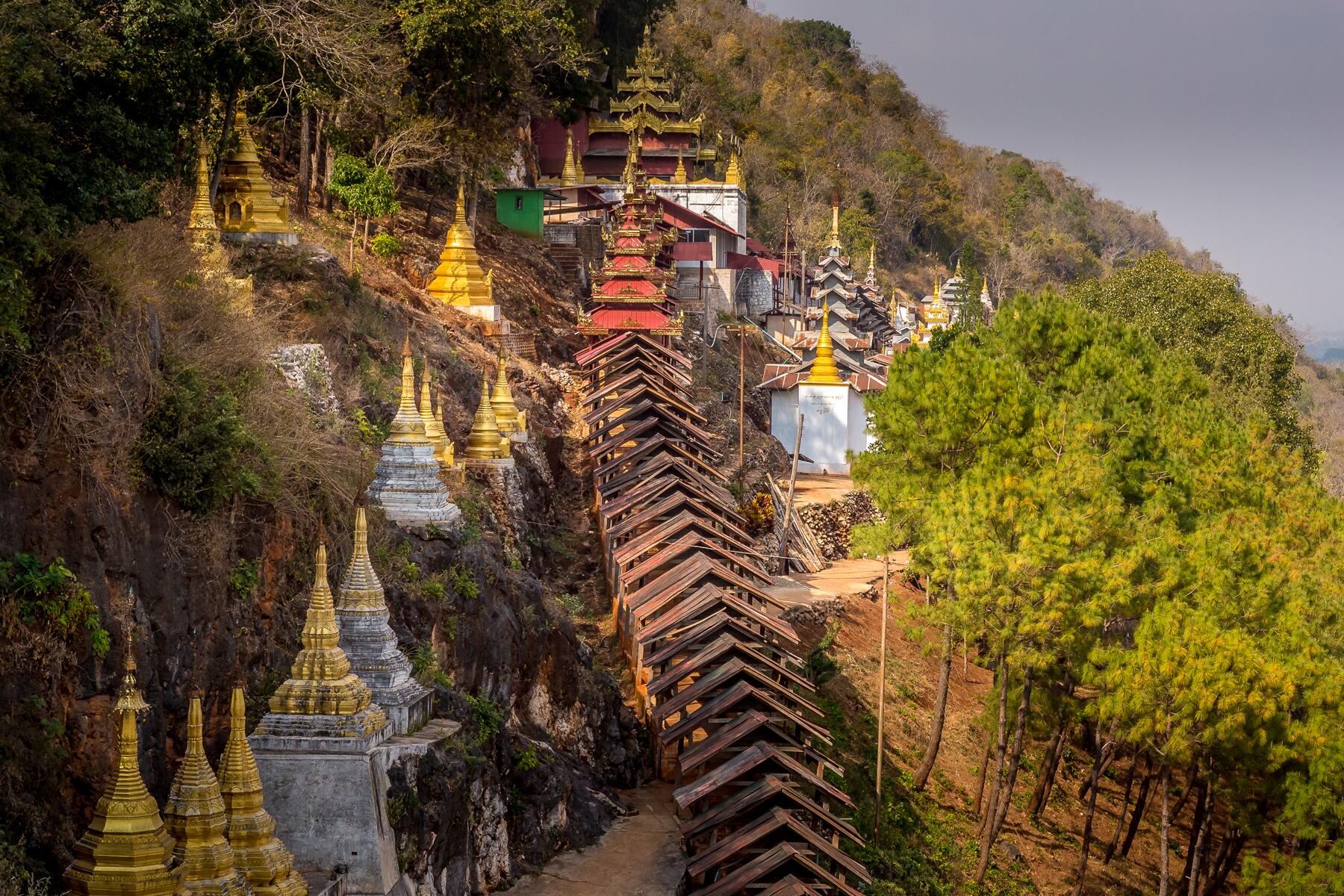Visit a Holy Cave (and Thousands of Buddhas) at Pindaya: Myanmar’s Spiritual Treasure
Introduction
Hidden amidst the scenic hills of Myanmar’s Shan State lies a spiritual and cultural marvel—the Pindaya Caves. Known for housing thousands of Buddha statues, these sacred caves are a testament to Myanmar’s deep-rooted Buddhist heritage and devotion. Visiting the Pindaya Caves offers a unique journey through history, spirituality, and breathtaking natural beauty. Join us as we explore why this holy site should be at the top of your travel list.
The Legend of Pindaya Caves
According to local legend, the Pindaya Caves were once home to a giant spider that trapped seven princesses. A brave prince came to their rescue, killing the spider with his bow and arrow. Today, the caves are a symbol of triumph and protection, attracting pilgrims and tourists from all over the world.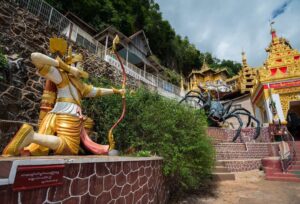
The Marvel of Thousands of Buddhas
The Pindaya Caves are renowned for their incredible collection of Buddha statues, which number over 8,000. These statues, donated by devout Buddhists over centuries, vary in size, material, and style, creating a stunning and serene atmosphere within the caves.
- Exploring the Caves
- Overview: The Pindaya Caves consist of a series of chambers that extend deep into the limestone hillside. Each chamber is filled with Buddha images, creating a labyrinth of spirituality and devotion.
- Highlights:
- Shwe U Min Pagoda: Begin your exploration at the Shwe U Min Pagoda, the golden stupa marking the entrance to the caves.
- Main Cave: Wander through the main cave, marveling at the thousands of Buddha statues that line the walls and niches. Each statue is unique, reflecting the artistic styles and devotional practices of different eras.
- Meditation Chambers: Discover quiet meditation chambers where monks and visitors alike find solace and spiritual connection.
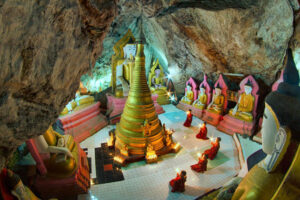
- Artistic and Cultural Significance
- Overview: The Buddha statues in the Pindaya Caves are made from various materials, including gold, marble, teakwood, and alabaster. These statues represent different historical periods and artistic styles, making the caves a living museum of Buddhist art and culture.
- Highlights:
- Intricate Carvings: Admire the intricate carvings and detailed craftsmanship of the statues, each telling a story of faith and dedication.
- Devotional Offerings: Observe the numerous offerings left by pilgrims, including flowers, incense, and candles, adding to the spiritual ambiance of the caves.
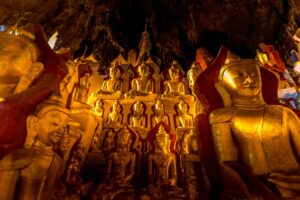
Natural Beauty Surrounding Pindaya
The Pindaya Caves are nestled in a picturesque setting, surrounded by rolling hills, serene lakes, and lush greenery. The natural beauty of the area enhances the spiritual experience and offers plenty of opportunities for outdoor activities.
- Pindaya Lake
- Overview: Located at the base of the Pindaya Caves, Pindaya Lake is a tranquil spot perfect for relaxation and reflection.
- Highlights:
- Scenic Views: Enjoy the serene views of the lake and the surrounding hills. The calm waters reflect the natural beauty, creating a postcard-worthy scene.
- Boating: Take a leisurely boat ride on the lake to fully appreciate the peaceful ambiance and stunning landscapes.

- Hiking and Nature Walks
- Overview: The hills and trails around Pindaya offer excellent hiking and nature walking opportunities.
- Highlights:
- Shan Hills: Hike through the Shan Hills, exploring the diverse flora and fauna of the region. The trails provide breathtaking views and a chance to connect with nature.
- Tea Plantations: Visit nearby tea plantations, where you can learn about the tea-making process and sample freshly brewed local tea.
Cultural Experiences
- Local Markets
- Overview: Explore the vibrant local markets in Pindaya, where you can find fresh produce, handmade crafts, and local delicacies.
- Highlights:
- Traditional Crafts: Shop for traditional Shan handicrafts, including textiles, pottery, and wooden carvings. These markets are a great place to find unique souvenirs and support local artisans.
- Local Cuisine: Sample delicious local cuisine, such as Shan noodles and tea leaf salad, and experience the rich culinary heritage of the region.
- Monastery Visits
- Overview: Pindaya is home to several monasteries where you can learn about the daily lives of Buddhist monks and participate in meditation sessions.
- Highlights:
- Monk Interactions: Engage with monks and learn about their spiritual practices and teachings. Many monasteries welcome visitors and offer guided meditation sessions.
- Monastic Architecture: Admire the traditional architecture and serene atmosphere of the monasteries, which provide a peaceful retreat from the hustle and bustle of daily life.
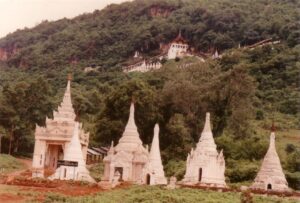
Tips for Visiting Pindaya Caves
- Best Time to Visit: The ideal time to visit Pindaya Caves is during the cool, dry season from November to February. The weather is pleasant, making it perfect for exploring the caves and the surrounding areas.
- What to Bring: Bring comfortable walking shoes, a flashlight for exploring darker sections of the caves, and a camera to capture the stunning sights. Dress modestly and respectfully, as the caves are a sacred site.
- Respect Local Customs: Be mindful of local customs and traditions. Remove your shoes before entering the caves and monasteries, and refrain from touching or climbing on the Buddha statues.
Conclusion
The Pindaya Caves, with their thousands of Buddha statues and serene natural surroundings, offer a profound spiritual and cultural experience. Whether you’re exploring the labyrinthine chambers, enjoying the scenic beauty of Pindaya Lake, or engaging with local traditions, this sacred site promises an unforgettable journey. So, visit the holy cave at Pindaya and immerse yourself in the spiritual heritage of Myanmar.

